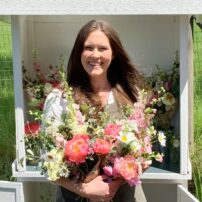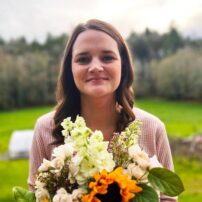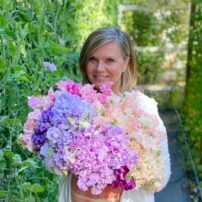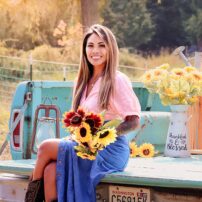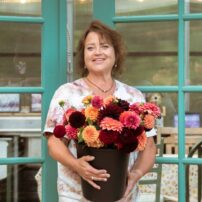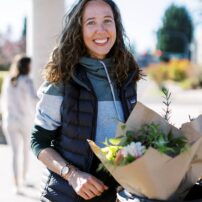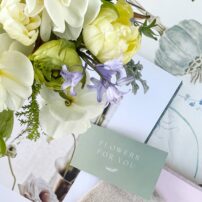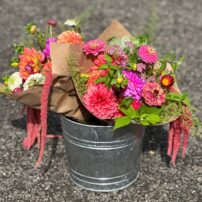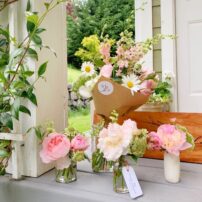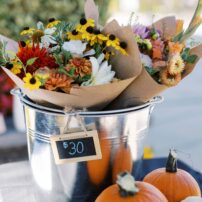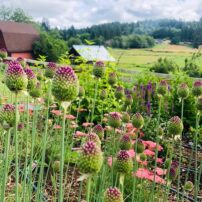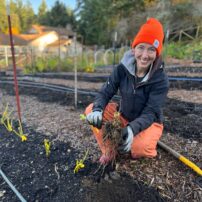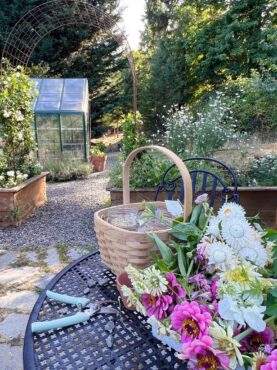
Perhaps you have seen their farmstands. Dotted down the backroads and tucked into neighborhoods, flower farms are proliferating around West Sound and growing into a unified local industry.
The Northwest climate is similar to the most well-known flower-growing areas in Europe (think: the Netherlands or the English countryside). Even people without much previous gardening experience are beginning to showcase their beautiful blooms. Because of our temperate climate, rich soil and abundant rainfall, it’s easy for flowers to flourish here.
Local Flower Growers
The earliest peoples in this area were probably the Nisqually, Puyallup and Squaxin tribes, according to the Gig Harbor History Museum. Caucasian settlers arrived during the 1860s, building fishing and farming communities that multiplied for a hundred years. By next midcentury, family farms declined in favor of more urban lifestyles.
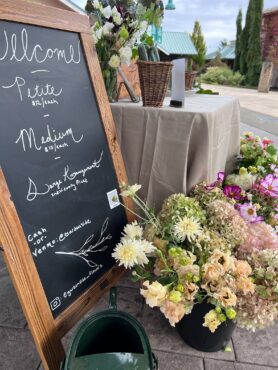
Lately, however, popular interest has resurged toward being connected with nature and the cycle of seasons, and feeling the earth.
Backyards turn into gardens, gardens into flower farms and flower farms into businesses. Whether they launched their farms from their passion for gardening, as happened for Kristin Rogers of Noelle’s Flower Farm, or through dedication to work on generations-owned family land, as with Katy Fox of Hidden Acres, these women quickly stepped beyond simple farming satisfaction to becoming entrepreneurs, cultivating both their fields and their farming specialties.
Leya Rae Stefanski, owner of Rae of Sunshine Flowers, became an expert in growing plants from cuttings. Karoline Sly of SlyHill Flowers has turned her love of dahlias into a thriving, online tuber sales enterprise. Mailani Akey of Akey Acres in Belfair has grown from farm sales to adding wholesale. Amy Linhart of Humming Harvest has already established solid flower sales in markets and stores, and has been teaching a variety of workshops. Karen Davis of Wild Handful has been in business for several years, selling both farmstead flowers and do-it-yourself buckets.
A Growing Community
In November 2022, the Gig Harbor Flower Farmers met and voted to form a guild alliance of passionate commercial growers committed to supporting one another. The Gig Harbor Flower Farmers Guild (GHFFG) is focused on fostering a connection between growers and consumers, educating people about the benefits of sustainable farming and promoting the purchase of local flowers.
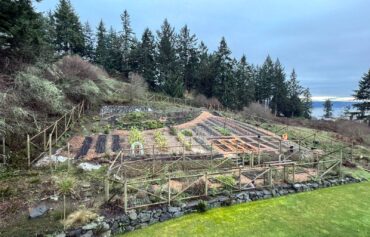
Each of the founding members came to her farming business in different ways, but all found themselves looking for a community of similarly minded women. What began as an informal Instagram thread created by Lindsey Mesa of Fox Island Flowers quickly advanced to a fully formed nonprofit, designed to promote the sales of “slow flowers” to retail customers and local florists alike.
“Our guild unites local farmers, florists and enthusiasts in a shared mission” Mesa says. “I thrive on connections. To be human is to yearn to connect with others in some meaningful way. The guild has created a sense of community among this group of women in all different stages of life.”
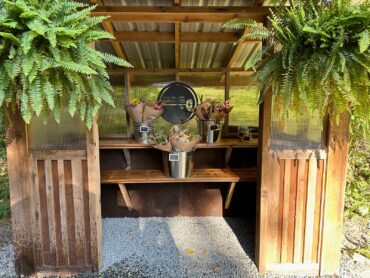
Amy Linhart of Humming Harvest Farm adds, “I am grateful for this opportunity to cultivate relationships with flower friends in the industry and those who support our endeavors.”
GHFFG is growing and welcomes interested flower farmers. Sunset Snips, owned by Carly Vestor, is the most recent farm to join.
Buying Flowers Locally
The flower industry worldwide generates over $34 billion each year, according to smartasset.com, with the bulk of sold flowers being flown between hemispheres as seasons change. Part of the impetus to buy locally grown flowers stems from the desire to reduce the carbon footprint generated by those imports. Local growers are committed to cultivating beautiful blooms and also a greener world.
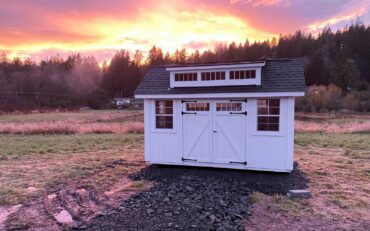
Besides decreasing transport pollution, farmers advance biodiversity by creating a living soil and healthier ecosystem. These businesses follow and help fuel the “slow flowers” movement, so coined by Debra Prinzing.
Kristen Rubin of Sweetwater Stem Co. lamented it had taken “years of stewardship” to rehabilitate her land. This work is labor intensive, but time devoted to digging and dirt pays beautifully in armloads of blooms. Even with smaller farm starts, such as Laurie Parkison’s HarborGirl Blooms and Ashley Peterson’s Gardenside Flowers, the tide is turning toward a buzzingly healthy future.
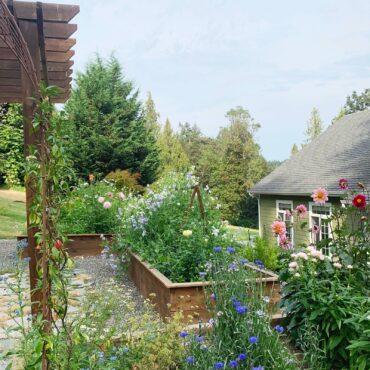
Connecting with Local Growers
The slow flowers movement also prioritizes connecting “consumers with the source of their flowers.” (Learn more at slowflowers.com). There are a number of ways consumers can do this.
You can:
- Buy from farmsteads and flower trucks. For example, Erica Pollan of Vintage Blooms Fox Island parks her truck at the Fox Island bridge to sell bouquets on summer days.
- Search “flower farms” for your area and find out where they sell.
- Follow GHFFG on Instagram, @gigharborflowerfarmersguild.
- Shop at the Gig Harbor Flower Farmers Guild Uptown Market at the Gig Harbor Pavilion from 10 a.m. to 1 p.m. every Wednesday throughout the growing season (March-October). See you there!




